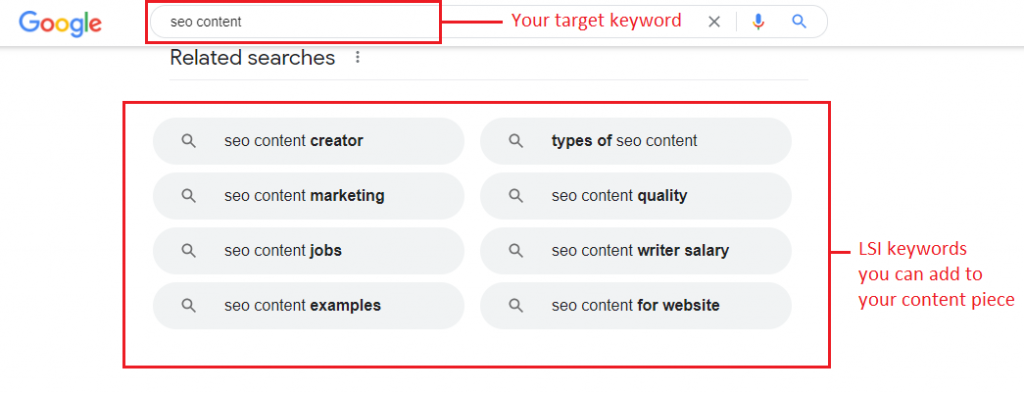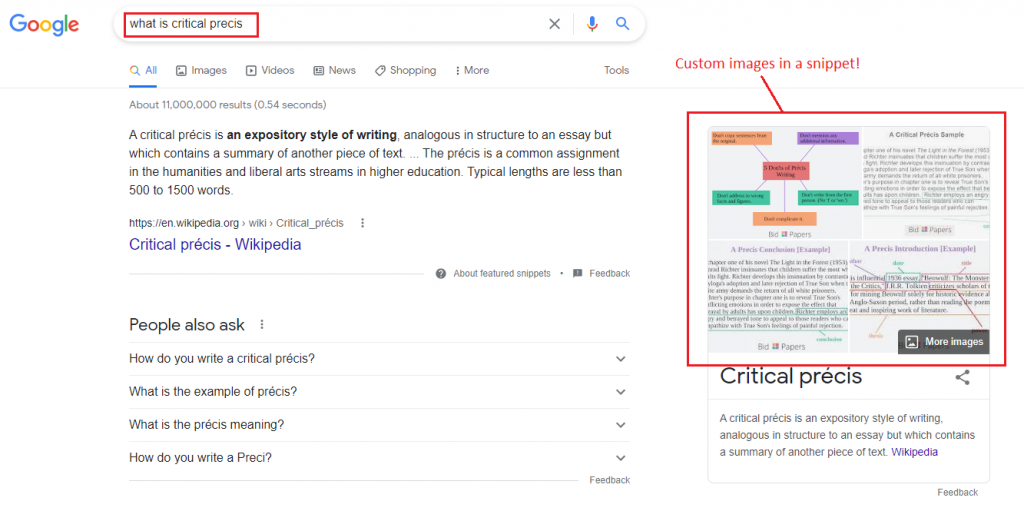When you create a WordPress website for business and sales, you want it to rank high and engage as much audience as possible. The problem here is that Google changes its algorithms so often that it turns into Mission: Impossible to optimize everything according to its needs.
Not far to seek:
Did you know, for example, that Google updated its algorithms more than 4,500 times in 2020? But despite its constant and impressive improvements, it still “reads” your content based on many on-page factors you can control.
And that’s where advanced on-page SEO tactics come into place.
In this article, you’ll learn:
- the basics behind on-page SEO in 2021;
- what Google wants from your content to rank it high (apart from keywords);
- tricks to follow when optimizing your WordPress content to influence user engagement and help Google better understand and rank it higher.
So, let’s get started.
What is on-page SEO?
On-page SEO is a bunch of practices you use to optimize website pages content for search engines and thus improve its visibility, rankings, and traffic.
Please mind that it’s different from technical SEO and off-page SEO:
- Off-page SEO is about working with everything that happens outside your website (like building links or brand mentions).
- Technical SEO is about optimizing your entire website for better work and visibility in search engines (like a website structure, schema, indexing, and loading speed).
- On-page SEO focuses on specific URLs (pages), not an entire website.
We bet you already know the standard on-page SEO practices: optimizing for a specific keyword, title and description tags, short and clear URLs, internal links — all they still work in 2021.
But:
For your WordPress content to skyrocket, you can’t limit yourself to those standards. Every Tom, Dick, and Harry optimizes like that, but only a few show up on the first page of SERPs. To join them, you need to take the on-page SEO of your website to the next level:
Not only is on-page SEO about proper keywords usage today, but it’s also about content optimization for search intent, user experience, and click-through rate.
With that in mind, let’s reveal some advanced on-page SEO practices that will help organize and optimize your content accordingly.
On-page SEO tricks to make content engaging

Make your content unique, valuable, and comprehensive
Unique content is not only about avoiding duplications and copyright infringements. It’s about publishing something that brings new things: a new case study, a new strategy no one shared, a more comprehensive list of resources, you name it.
And for your unique content to stand out and get noticed, ensure it’s super valuable for your target audience. That’s what you can do to make SEO content more valuable:
- Invite expert authors to write it, those with first-hand experience in the topic they cover.
- Add practical details (images, steps, screenshots) to make it easier for readers to put it into practice.
- Write it with usability and readability in mind; consider the rules of web writing to make content more engaging. Checking content via specific writing apps can help you see its scores and weak points to edit.
- Share updated information with your audience.
Benefits of Blogging on a WooCommerce store
And if your content piece is comprehensive, aka covering an entire topic, it has bigger chances of ranking high. Why?
Google will consider it the most sophisticated page to satisfy the query and provide users with everything they might want to know on the topic, thus ranking it higher.
One of the easiest ways to make Google see your SEO content as comprehensive is using LSI keywords in it. These words are synonyms helping search engines determine a page’s relevancy.
When writing long content, you will likely use them naturally. But if you want to focus on particular LSI keywords to mention on your page, feel free to use instruments like LSI Graph or Google’s “Search Related to:”

Write content that satisfies search intent
A comprehensive and valuable content piece on your WordPress website page will help you catch up to Google’s first page of search results. But to stay there, it should satisfy search intent, i.e., provide exactly what a user wants to get when typing a query.
Types of search intent are four:
- Informational; when a user looks for info on something.
- Navigational; when they want to find a specific page.
- Commercial; when a user does some research before making a purchase.
- Transactional; when they want to buy something.
The easiest way to figure out the search intent behind your keyword is to check the search results. It will help understand the content types Google prioritizes for a particular keyword and craft your SEO content accordingly.
Words like “how,” “tips,” “ways,” or “methods” in titles indicate informational search intent. The “best” and “top” words flag commercial intent. Words like “buy,” “sign up,” or “register” reveal transactional intent. The key phrases from Google’s “People Also Asks” section can also help you understand the intent behind particular keywords:

Format it to be super skimmable yet engaging
User experience is a set of signals helping search engines measure how visitors interact with your content and rank it accordingly. They include page speed, visualizations, usability, dwell time, and bounce rate.
You can influence on-page UX signals, optimizing your content for clarity and better readability:
- Add more subheads
- Break long paragraphs
- Add bullet points
- Consider videos and interactive content
- Alter text and graphics
- Provide clear definitions and summaries
These are among SEO writing practices to craft your on-page text so that visitors would stay with it longer: concise yet compelling introductions, writing tricks that hook and motivate to continue reading, incorporating keywords naturally throughout the copy, appealing to pain points and emotions — all they matter when speaking of a web page UX.
The longer users stay on your web page and the more they interact with it (scrolling, clicking, leaving comments), the more relevant it will be in the eyes of Google’s algorithms to rank it higher.
Add calls to action to your content
Other than the simple textual options, you can implement calls to action in different page locations. So how to make it happen? The answer, usually, is plugins. WordPress-powered ecommerce has good and easy to use plugins that allow you to use calls to action.
Here are some of the best to make it insanely easy for you to create engaging content and show it up:
Notibar: This notification bar for WordPress will launch in the Theme Customizer with a live preview. It makes it easier than ever to display announcements in your WordPress blog. You can choose to show it on every page or only selected pages.
Ultimate Blocks: This plugins works perfectly if you’re a fan of Gutenberg editor. It comes with a lot of block styles that fit all kinds of actionable content. Moreover, you can customize everything in the block.
Optimize for featured snippets
A featured snippet in Google is a short answer to a user query, displaying on top of search results. Also known as Answer Box or Position 0, it includes your page title and URL, thus making a massive difference in your CTR.
Featured snippets look like this:

Some tricks with SEO content on your web page can help you get there: Google will determine it as the best and more relevant answer to a user query, placing it in a snippet.
The only catch:
Your page needs to already be in Google SERP’s top 10 to struggle for its place in snippets. Here’s what you can do to optimize it accordingly:
- Ensure your WordPress page is on the first page of search results.
- Check its target keyword in Google to understand what types of snippets are there now.
- Optimize your page accordingly: add a definition to your SEO content to get to a “definition” snippet; structure your content as a step-by-step guide to jump into a “list” snippet, and so on.
Example:

This article of Bid4Papers has a list of how-to steps at the very beginning of its content. And that’s what we have in featured snippets when searching for a corresponding keyword:

Publish original images on your content page
Did you know that websites with unique visual content outrank those using stock photos?
Original images are another signal for Google that your content is unique and providing something new to users, so try avoiding stock photos that a thousand other sites republish constantly.
Whether you manage eCommerce, social commerce, or an informative/educational WordPress blog, consider designing custom images for your content assets. It’s your chance to rank a WordPress web page higher or even get into featured snippets.
(Just recheck the above example: All the pictures you see there are custom, made with… Paint!)
As well as this one:

As you see, the snippet itself comes from Wikipedia. But about the images? Yeap, they lead to a corresponding content asset of Bid4Papers again.
But:
To make this on-page SEO trick work, remember about the proper optimization of your custom images:
- Name them appropriately. (Yes, filenames also give Google clues about your image subjects. Consider “SEO-writing.png” instead of “image_1.png,” use dashes between words, be concise, and include keywords.)
- Use descriptive alt texts for images: accurate and straightforward, with a keyword variation in it. But don’t stuff your alt with keywords to prevent it’s looking like spam.
Final words
Search engine algorithms become more innovative from year to year, making every detail of your WordPress content count. Standard SEO practices of both on-page and off-page optimization continue working, but we need to take them to an even higher level if willing to outperform competitors.
Let’s make the most out of content on our web pages:
When comprehensive and valuable, optimized for voice search, satisfying user search intent, and smartly formatted for better user experience, it has a 100% chance to rush into Google’s top results.
And for an even better outcome, you can always try customizing your emails and other marketing content to boost user engagement and thus influence your target page’s visibility and organic traffic.
